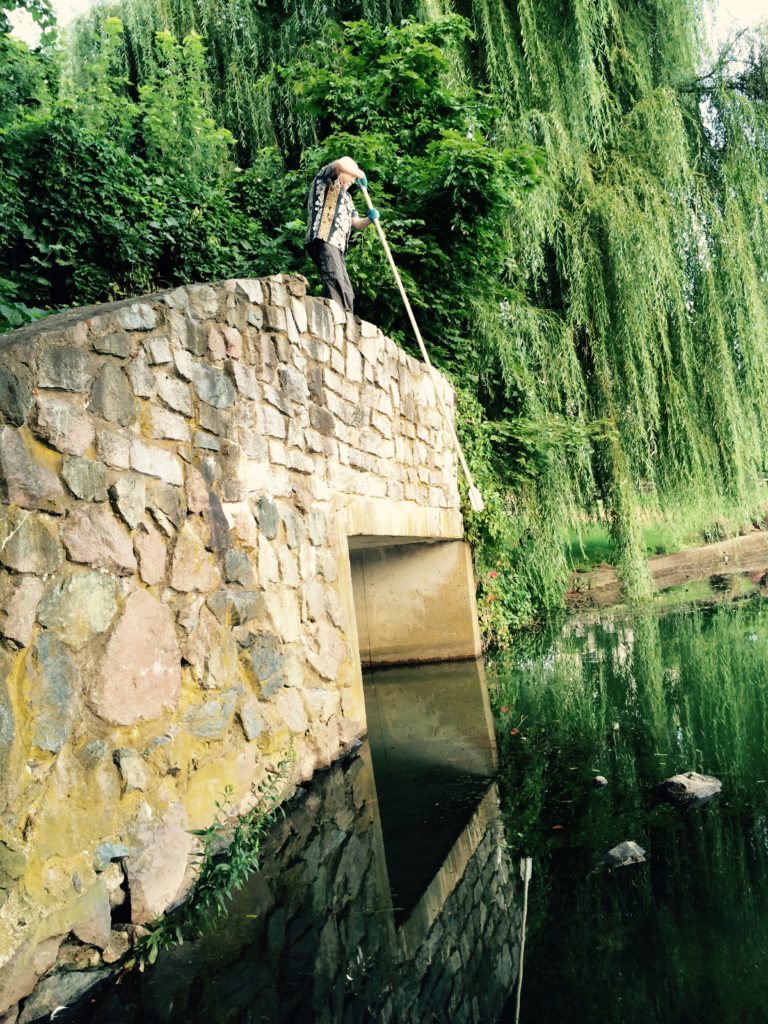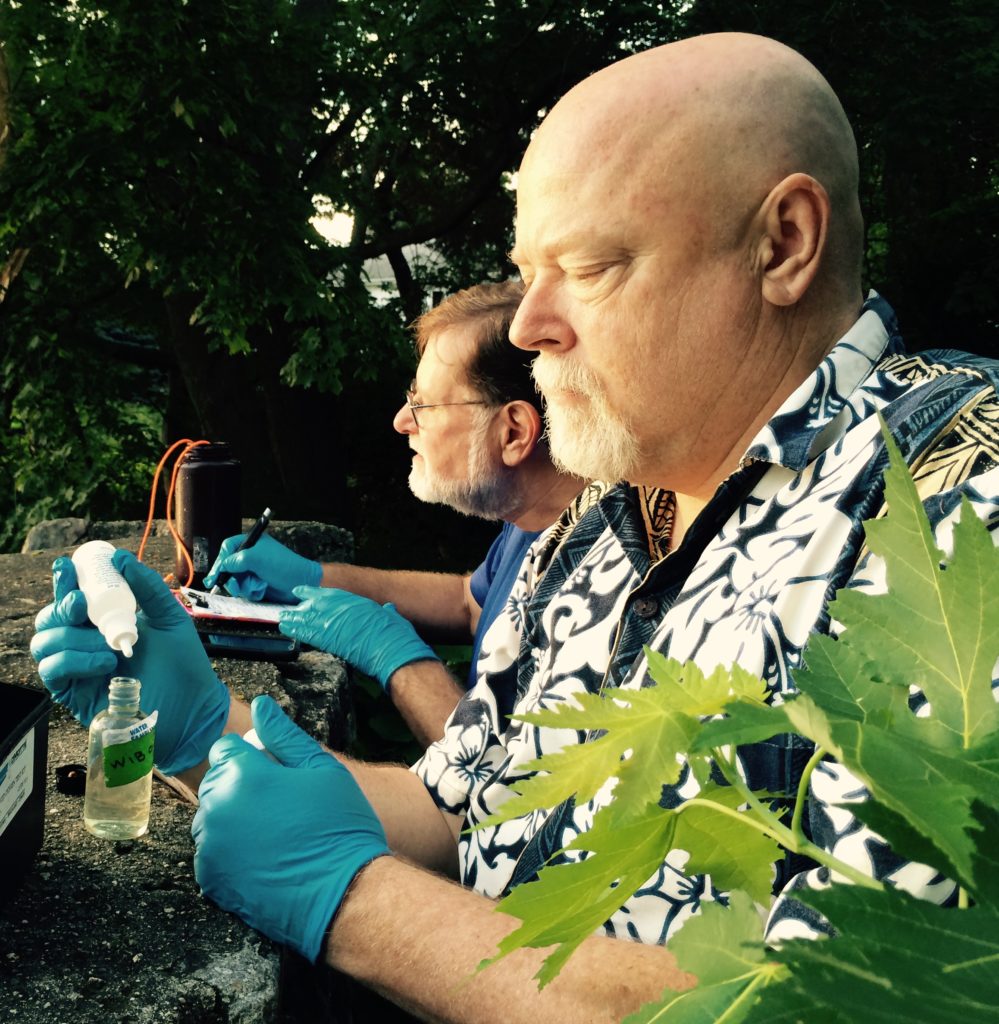Volunteers Monitor Every Month
by Anne-Marie Lambert
Almost every month for more than 16 years, Mystic River Watershed Association (MyRWA) volunteers have been monitoring water quality at the location where the Winn’s Brook culvert flows into Little Pond.
In the early morning of August 17, 2016, I walked to the end of a public path off Brighton Street, near the intersection with Hoitt Road. I watched as Roger Wrubel and Doug Matson took out their MyRWA sampling gear and carefully scooped water samples into test tubes. They were measuring dissolved oxygen, turbidity (a measure of suspended particles), nutrients (phosphorous and nitrogen), and coliform bacteria. While they waited for chemical reactions to trigger precipitates for the dissolved oxygen test, Wrubel and Matson recorded environmental conditions such as the lake water level (very low), the water and air temperature (both 26oC, 78oF), the flow rate from the culvert (zero), and the last 24 hours of precipitation (none).
Rain can affect sample results in two ways: it washes street pollution into the conduit, and it creates flow so that bacteria can enter the conduit from leaky sewer pipes. Even on dry days, though, the monthly sample can sometimes show high levels of coliform bacteria, as if there had been a recent contribution from the sewer system into the storm drain system. The samples are sent to a lab for analysis, which takes about a month to complete and is funded by grants and charitable contributions.
MyRWA staff post the data on mysticriver.org and make it available on request for further analysis to towns and researchers.
It is very unusual to have such a long term data set available using a consistent and systematic technique for one site. Despite significant infrastructure investments by the town, the results have been discouraging for most of the last 16 years, especially for the bacteria indicating sewer leaks. The detective work to find all the contributing sources is time-consuming and expensive. The town pays contractors to take separate water quality samples, and the EPA takes its own samples as well. I was impressed with the diligence of MyRWA’s work at this site, named “WIB001.”
I hope that our town makes use of all data to diagnose pollution sources and determine what sewer and stormwater repairs are needed to improve water quality downstream in Little Pond, Little River, Alewife Brook, and, eventually, the Mystic River and Boston Harbor.
Anne-Marie Lambert is a Belmont resident and board member of Belmont Citizens Forum.




Sorry, the comment form is closed at this time.